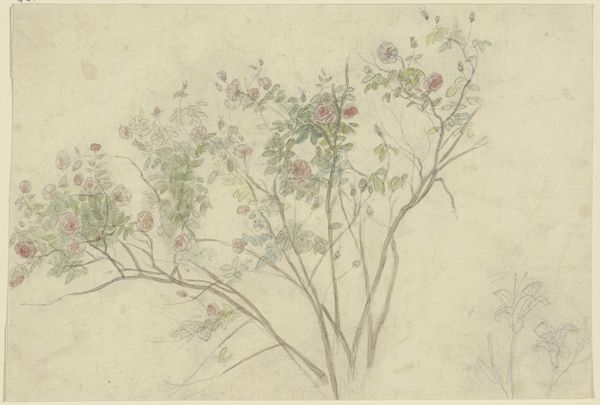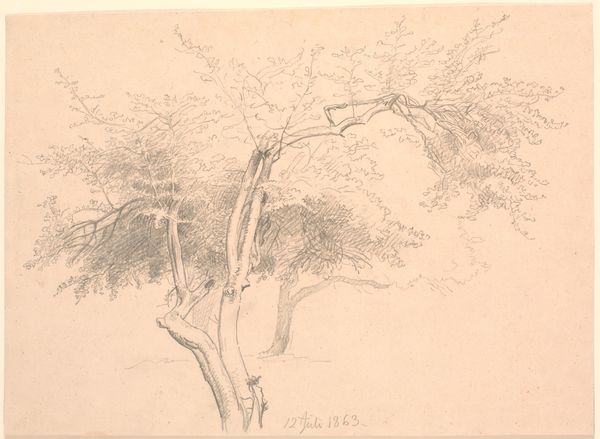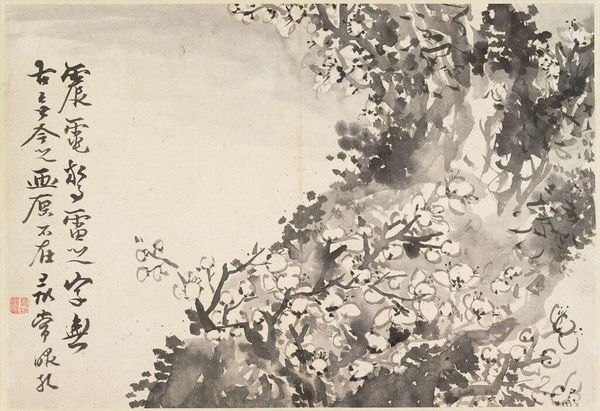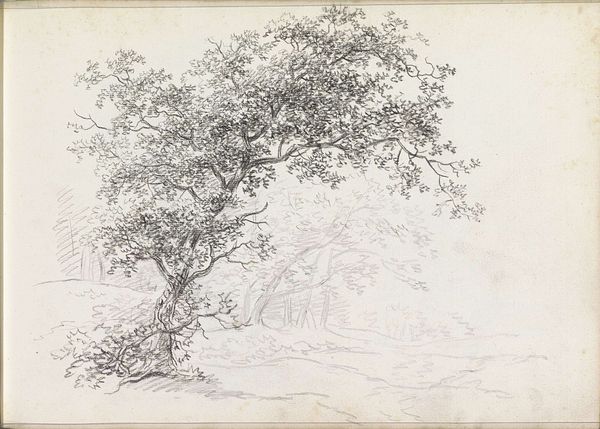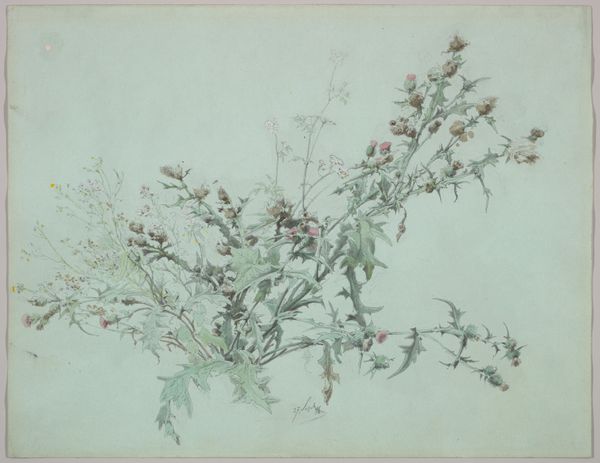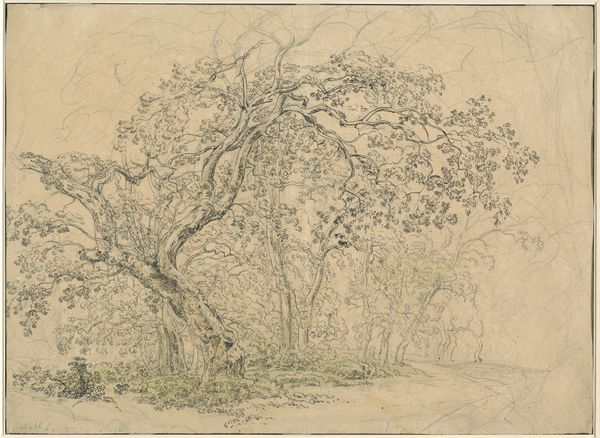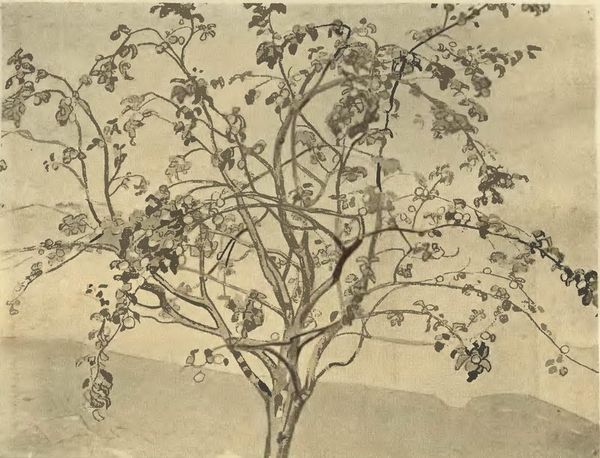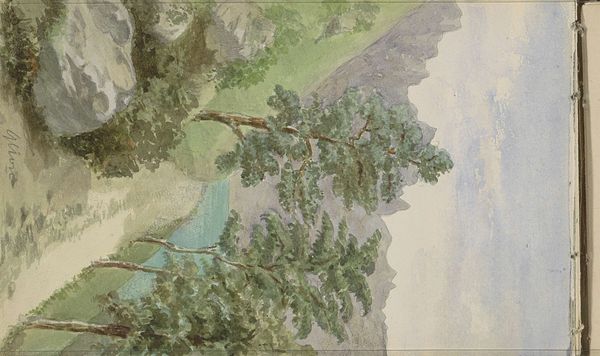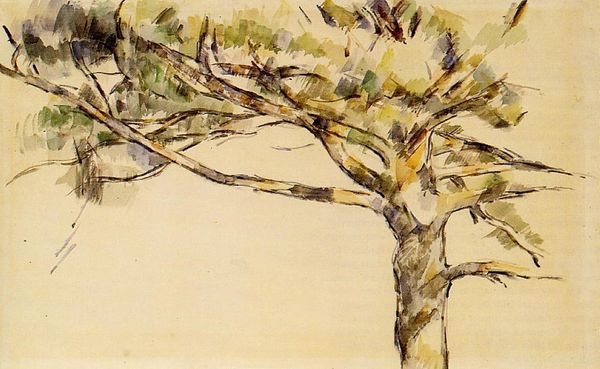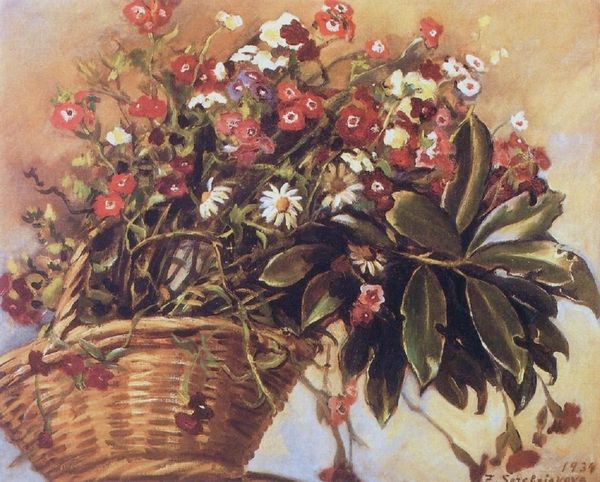
Copyright: Public domain
Editor: This is "Rognebærtre, Vang" painted in 1853 by Hans Gude. It's a watercolor painting that captures a vibrant rowan tree in full berry. I'm immediately struck by the contrast between the delicate watercolor technique and the almost bursting life depicted in those bright red berries. What do you see in this piece? Curator: Well, darling, for me, it’s more than just a tree. It's a hymn to impermanence, isn't it? Gude, you see, wasn’t simply painting nature; he was painting a feeling, a fleeting moment. Think of it, 1853… Romanticism was blossoming (excuse the pun!), and artists were yearning for a connection with the sublime. A simple rowan tree becomes a symbol, laden with the weight of autumn’s approach, don’t you think? Editor: I can see that. The berries definitely give it that end-of-summer vibe. Is the location important? Vang, you said? Curator: Precisely! The specificity is key. It's not just any rowan tree, but *this* tree, in *this* place. Naturalism was sneaking into the Romantic mindset. They wanted truth, raw and unfiltered, yet still tinged with emotional resonance. Tell me, what does the watercolor itself evoke in you? The medium is the message, after all, hmm? Editor: It feels… ephemeral. Like the scene could vanish at any moment. Curator: Exactly! Gude’s deft touch with watercolor lends itself beautifully to this feeling. It’s light, airy, yet holds such depth of color. It captures the very essence of a moment on the cusp of change. What have you learned after examining this beautiful watercolor? Editor: I definitely have a new appreciation for how landscape painting at this time tried to balance both accuracy and emotion, it’s quite compelling! Curator: Absolutely, and it makes you wonder what Gude was thinking as he painted. A touch of melancholic beauty never hurts the soul, wouldn’t you agree?
Comments
No comments
Be the first to comment and join the conversation on the ultimate creative platform.
